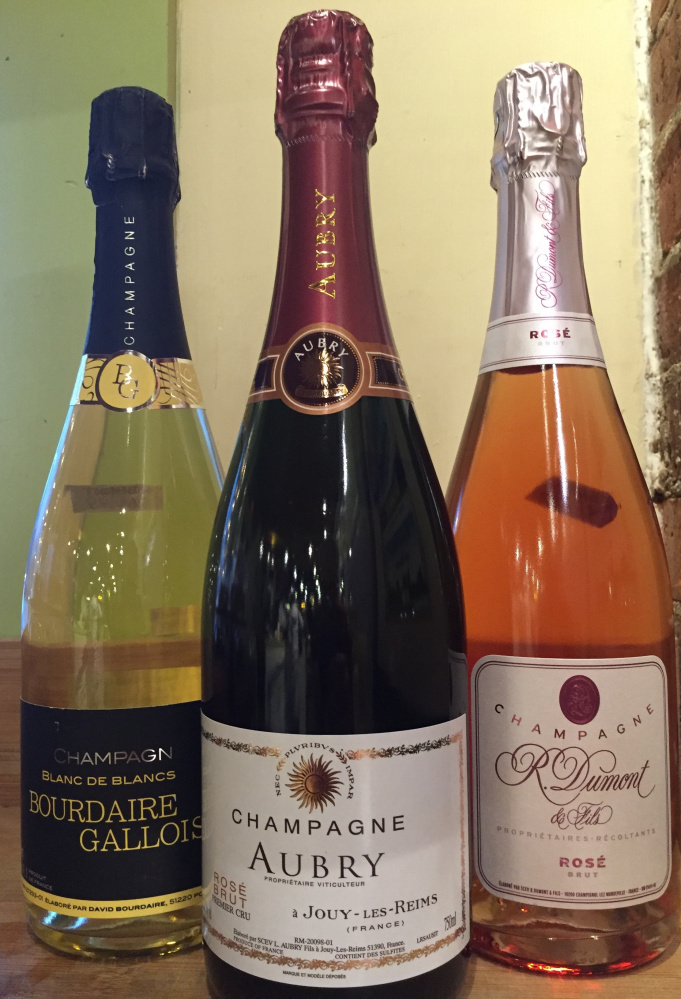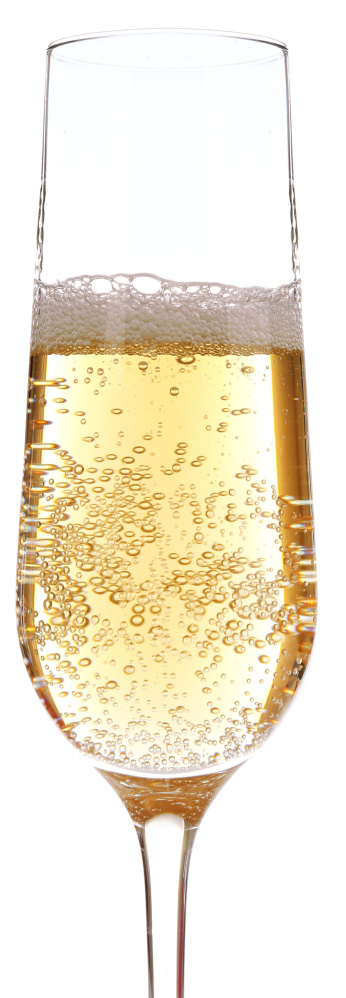The usual move these days for season-specific mention of sparkling wine is to offer pennywise suggestions for alternatives to Champagne. Champagne at New Year’s is such a cliché that it seems more interesting to promote Franciacorta, or a new generation of Prosecco producers in Valdobiaddene, or Loire-o-philic Californian pétillants-naturels.
That’s all fine. Delicious wines with effervescence are produced all over the world. But there is nothing, nothing, nothing like Champagne. There is, ultimately, no sparkling wine with comparable potential, comparable beauty, comparable complexity, comparable grandeur. A possible exception to that obnoxious claim has yet to prove itself conclusively since its winegrowing culture is younger, but many authorities point to England.
Yes, England. You know why? Because climate change has made it increasingly viable to grow grapes there. But perhaps even more importantly because certain regions of England share the same foundation, Kimmeridgian soils linked beneath the Channel, with parts of Champagne as well as Burgundy and the Loire.
I mention the geological connection to emphasize a powerful fact that too many people ignore: Champagne is a wine of place. It is, in fact, virtually unparalleled in its ability to transmit the unique nuances of where the grapes grew and the wine was made. I can think of only a handful of other wine regions in the same league: Mount Etna, Mosel, Barolo, Burgundy.
Most wine enthusiasts know by now that Champagne is not a generic term for sparkling wine, though the French still, after all this time, must diligently police the world’s wine labels and marketing schemes to ensure that the name of this region in their country’s north is not used to sell other areas’ wines. But the widespread acknowledgment that only wine from Champagne ought to bear that name has not dislodged the misperception that Champagne is primarily an idea, a brand.
Champagne’s more endearing connotations are of joy, celebration, lightness, love. Its more annoying, if not offensive, associations are of luxury and ostentation. But either way, to put it in (French) semiotic terms, the signifier outruns the signified; the idea overwhelms the thing; the brand wins.
There’s only one way to rescue Champagne from the curse of its valuable brand, and that’s to drink it. We might as well start on New Year’s Eve, though of course the goal is to continue, consistently, thereafter. An acquaintance told me the other day of a friend who just returned from a year in Paris telling her, “You know why France is different? Because we didn’t drink Champagne for any reason; we just drank it every night.”
Such anecdotes are an exhilarating rebuke to anyone, from terrorist shooters on down, who would deny the centrality of pleasure to the sustenance of culture. But pleasure isn’t enough. What Champagne can offer is pleasure yoked to profundity, stories from the soil, the treasure of truth.
We must discuss price. A good bottle of Champagne will cost at least $40. So, yeah. But consider, first, how a bottle of still wine comes to be. Grapes are grown, then harvested, then crushed, fermented, aged, blended, bottled. All sorts of factors determine price, but one can produce a good bottle of still wine, from healthy soils and vineyards tended conscientiously, vinified without much undue manipulation, for around $14.
Now let’s consider how a bottle of sparkling wine from Champagne comes to be. The same general processes of viticulture and vinification are employed, interspersed with the following (at least) factors: The region’s climate is notoriously difficult to farm, so that for the most part individual vintages must be held and blended over multiple years. The grapes must be pressed very gently, especially when – as in the majority of wines – the pinots (noir and meunier) are used, so that the skins don’t color the wine. After the wines ferment, they are blended in a painstaking process, with at least 20 percent of the harvest reserved in order to be blended in subsequent years.
After blending, a liqueur de tirage is added to each bottle: a mix of reserve wine, sugar and yeast. The crown-capped bottle is then stored for a minimum of 15 months, though usually longer, during which time the additional yeast consumes the additional sugar and creates not only more alcohol but also carbonation. After this secondary fermentation, the wine continues to age on its lees (dead yeast sediment). Once that’s complete, the bottles are placed upside down at an angle in wooden racks, so that the lees remaining in the wine can be removed. During this period of remuage, the bottles are “riddled” – turned, by either hand or machine – to help the lees settle in the neck of the bottle. The bottle is then turned completely upside down for further maturation.
Finally, it’s time for disgorgement. The neck of the bottle is frozen, then the crown cap is removed, releasing the ice-encapsulated lees. Except for the increasingly popular, extraordinarily dry “no dosage” or “nature” Champagne wines, a liqueur d’expédition – a final mix of wine and sugar – is then added, to adjust the sweetness of the finished wine. A cork goes into the bottle, which then rests for additional time in order to let the liqueur integrate with the rest of the wine.
That is a remarkable, complicated process, and to be able to participate in it is worth $40-80 to me. For most folks, though, that is simply too much to pay for a bottle of wine. But there are ways people with moderate money can do it. You and three friends can split the cost of one bottle, and then for $15 each enjoy a glass of something extraordinary. Or one week per month, cut $20 out of your food budget (maybe don’t buy meat?) and direct it toward a bottle of Champagne.
One of the great secrets of Champagne is how well the wines marry with decidedly cheap food: a non-vintage brut with pasta and cheese is a thrill, rosé with a simple pizza is amazing, blanc de noirs with fried calamari or chicken is heaven. Once a month you should make a meal out of a loaf of bread and a single cheese, and some olives, and Champagne – not much more expensive than a normal meal.
Of course, corners can be cut, and Champagne more than most regions is rife with wines that are simply not worth the money, but are priced according to brand and image. Often the bigger houses, operating at advantageous economies of scale as they buy grapes from growers, direct more of their budgets toward marketing campaigns.
Champagne growers themselves, who used never to make their own wines since the facilities were too expensive to own and operate, now produce wine in increasing quantities, and currently make up roughly five percent of the market. Whereas, broadly speaking, the aim of the well-known Grands Marques is to maintain in their nonvintage wines a “house style” that does not vary, the intention of Champagne’s individual grower-producers is to highlight terroir, and to show the unique, teeming life in the one blessed place they happen to roam.
That distinctiveness is what Champagne offers in such generous, scintillating variety. There are wines of power and amplitude, wines of delicacy and spontaneity, wines of crackling energy, wines of calm, wines of fruit, wines of earth.
I suppose I could have spent the last 1,000 words delving into names and listing my top Champagne picks. But I felt a need first simply to make the case that this one category of wine is worth the plunge. I had to convince not just you, but myself too, for none of us is quite Parisian enough.
I’ve been doing my best, though. Here’s a brief list of Champagne producers whose wines I’ve drunk or tasted over the past three months that are distinctive, reflective and real.
Try Lanson or Gimmonet for polish, creaminess and class. Aubry, especially their super-dry rosé, is much more pinpoint, vervy and intense. Dumont and Baudoin make very approachable, analog wines, their pinot elements especially immediate. Egly-Ouriet’s generous, powerful wines are simply gorgeous, resonant like an orchestra. Bourdaire-Gallois’ Blanc de Blancs, available in limited supply, is like all great BdB elegant and long-form, but wears its elegance especially comfortably. Goutorbe’s rosé is ripe and velvety, almost cuddly.
There are others, natch. Seek out more advice at a trusted shop or strong online information resource such as champagneguide.net or vinousmedia.com. Or just drop me a line, any time, 24/7. These wines are worth it, and whether it’s New Year’s Eve or not, I’m available through the night.
Joe Appel is the wine buyer at Rosemont Market. He can be reached at:
soulofwine.appel@gmail.com
Copy the Story LinkSend questions/comments to the editors.




Success. Please wait for the page to reload. If the page does not reload within 5 seconds, please refresh the page.
Enter your email and password to access comments.
Hi, to comment on stories you must . This profile is in addition to your subscription and website login.
Already have a commenting profile? .
Invalid username/password.
Please check your email to confirm and complete your registration.
Only subscribers are eligible to post comments. Please subscribe or login first for digital access. Here’s why.
Use the form below to reset your password. When you've submitted your account email, we will send an email with a reset code.